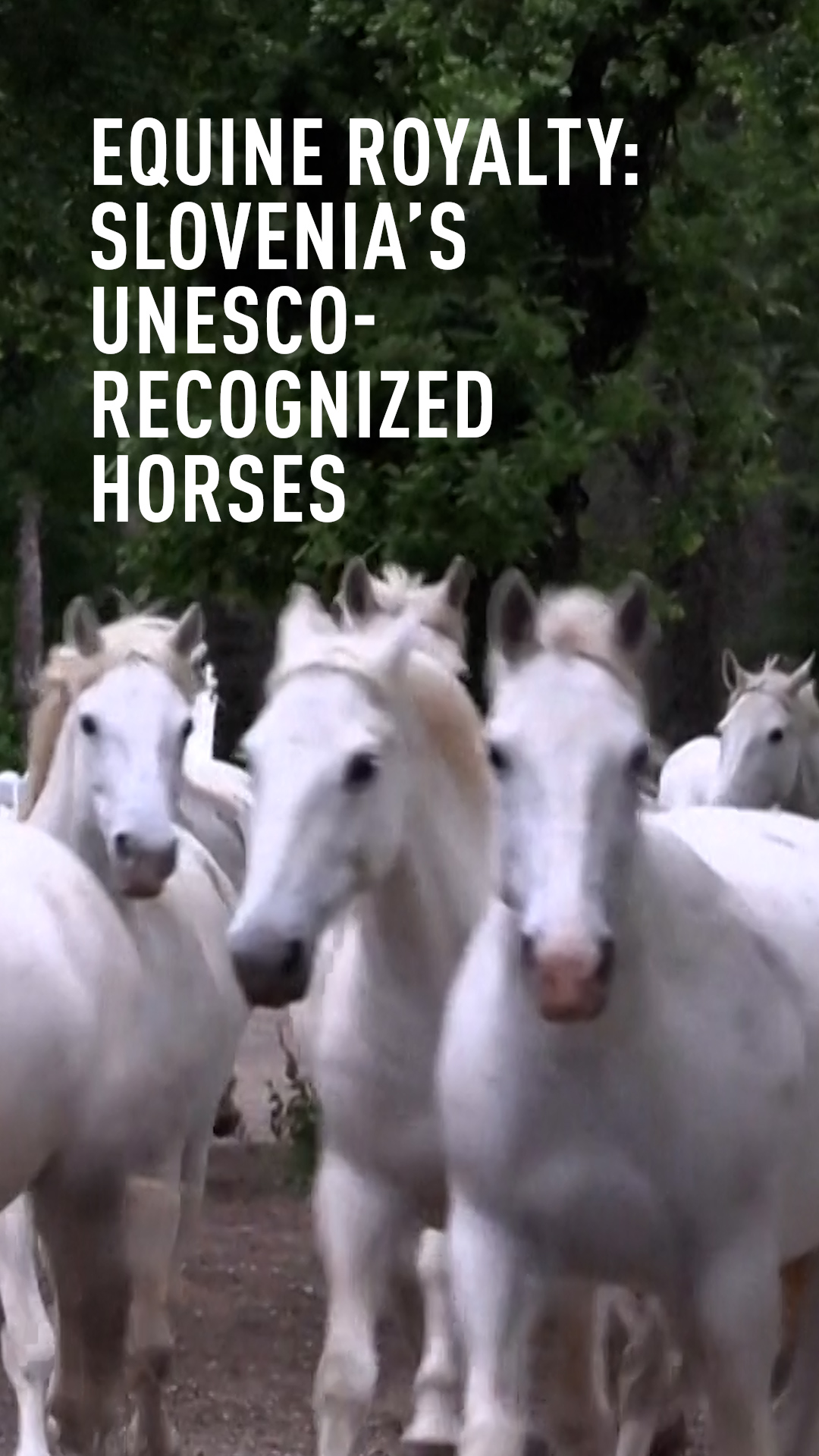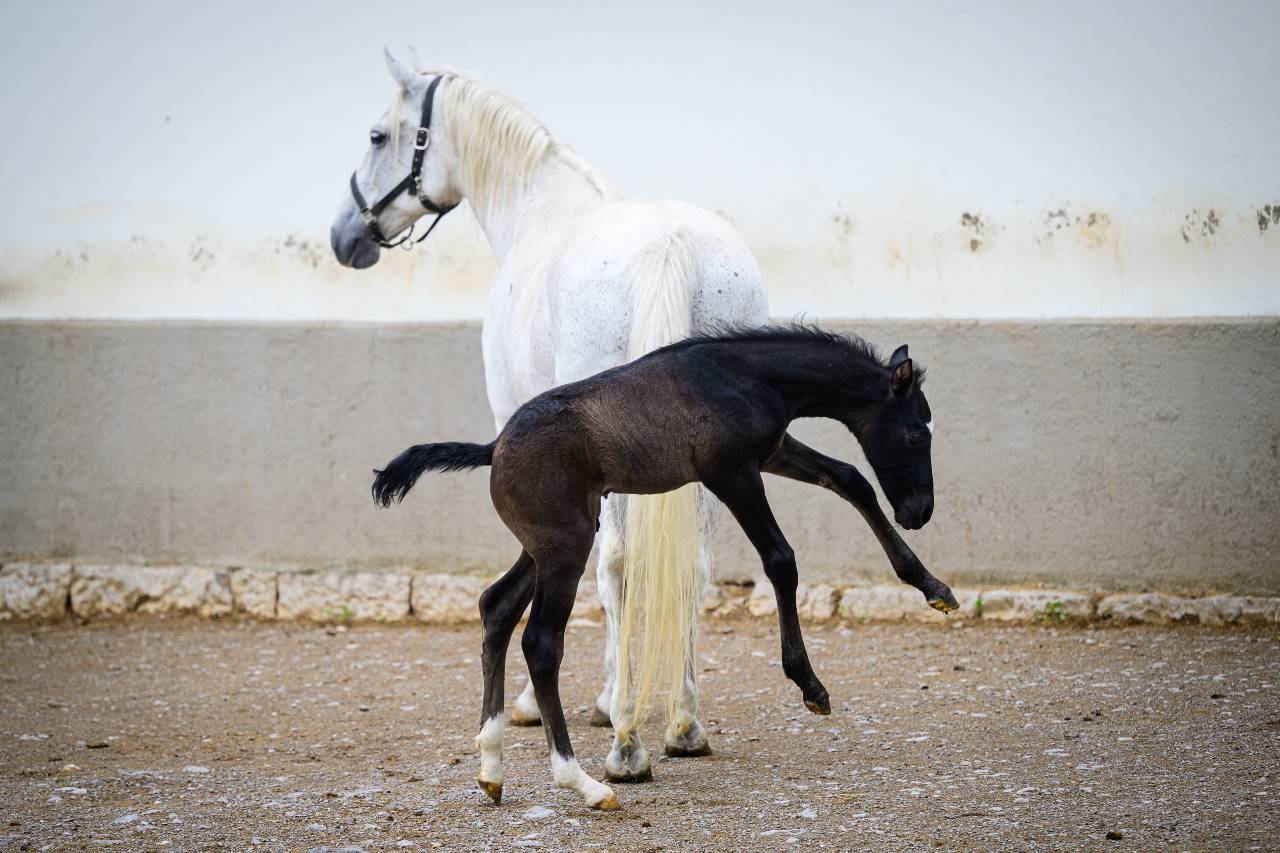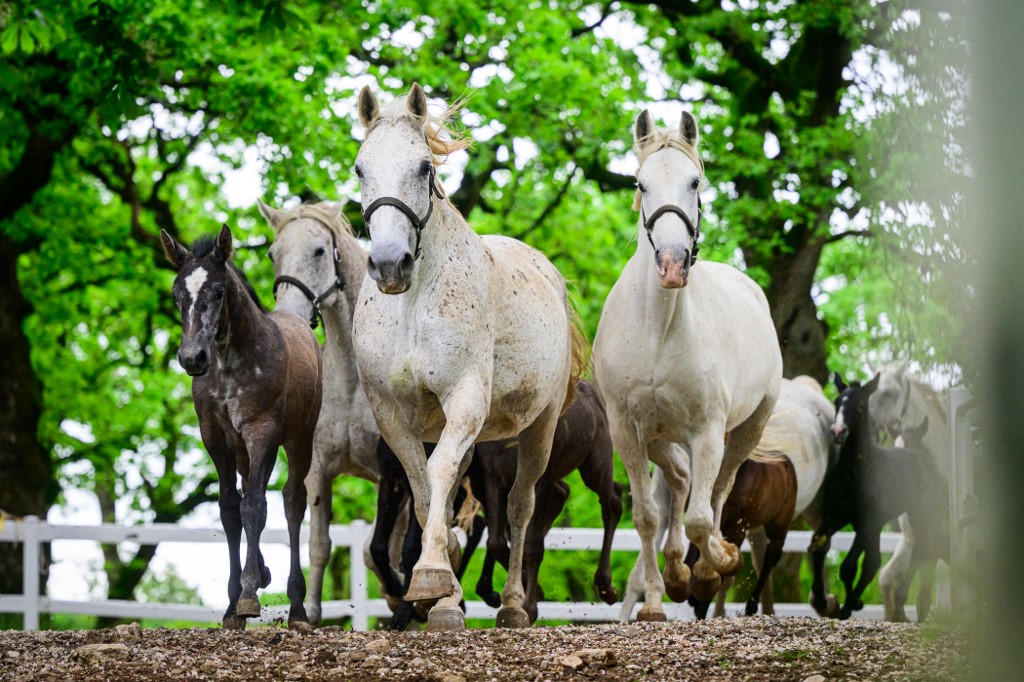00:54

With their majestic white hair and centuries-old blue bloodline, the world-renowned Lipizzan horses are one of the most distinguished horse breeds on the planet. So distinguished, in fact, that rearing the noble stallions recently made UNESCO's Intangible Cultural Heritage list.
In the small Slovenian village of Lipica, the home of Lipizzan horses, owners and enthusiasts came together from European countries that once were part of the Austro-Hungarian Habsburg Empire to celebrate the announcement - by staging a show demonstrating the animals' grace.
READ MORE:
UK zoo welcomes birth of endangered Mongolian wild horses
China's Hisense becomes Slovenia's largest exporter
Slovenia offers a lot in winter sports
"They are phenomenal animals," said 42-year-old horse farm owner Laura Highlander, who traveled all the way from the U.S. to see the horses. "The way that they've been trained and the level of skill of the riders is incredible," she added.

A mare and a foal of a Lipizzan horse breed play outside a stable in Lipica, Slovenia. /Jure Makovec/AFP
A mare and a foal of a Lipizzan horse breed play outside a stable in Lipica, Slovenia. /Jure Makovec/AFP
The rare horses, also known as Lipizzaners, are descendants of long stallion lines crossing Spanish, Arabic and Berber horses and were first bred by the Habsburg court in the 16th century.
Characterized by their white hair and gray skin, they are famed for their classical dressage jumps, a series of difficult movements that require strength and precision, in which the horse's feet leave the ground.
The name derives from their home village of Lipica, which is nestled among Slovenia's verdant hills and lush forests and was once part of the Austro-Hungarian empire.
The picturesque village is home to one of the world's oldest stud farms, which dates back to 1580 and currently stables more than 400 blue-blooded horses.
"This is the Lipizzan's home," said Slovenian culture minister Asta Vrecko, ahead of the UNESCO ceremony last weekend.

The name of the breed derives from their home village of Lipica in rural Slovenia. /Jure Makovec/AFP
The name of the breed derives from their home village of Lipica in rural Slovenia. /Jure Makovec/AFP
The event to celebrate their UNESCO listing was attended by the eight countries that jointly applied for recognition of their shared breeding heritage - Austria, Bosnia, Croatia, Hungary, Italy, Romania, Slovakia and Slovenia.
Dark at birth, the Lipizzan horses' coats turn white by the time they are about four years old, which is when their demanding training starts and the most promising stallions are selected.
If health permits, the equine stars can sell for up to several hundred thousand dollars each, and can remain active well into their mid-20s.
"Lipizzans can have a strong temperament. They are usually serene, sometimes shy," Miro Dragic, head of the Lipica stud farm riders' team said. "They are kind and it is up to us to recognize the quality of each horse."
But only the best stallions are trained in the elitist 'haute ecole' of classical dressage to eventually master an equine ballet of cantering, caprioles and pirouettes.

Subscribe to Storyboard: A weekly newsletter bringing you the best of CGTN every Friday
Source(s): AFP